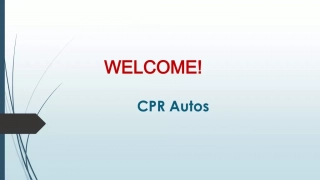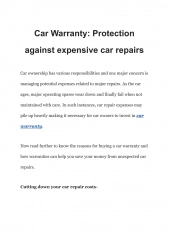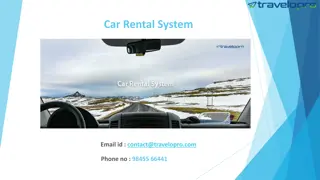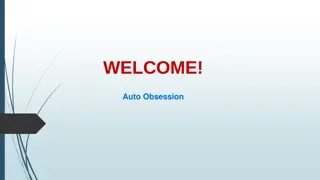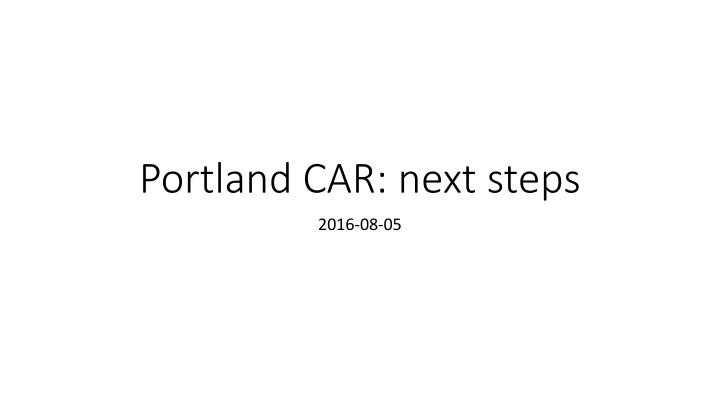
Mechanical Aggregation in Statistical Data Analysis
Explore the phases of mechanical aggregation and data analysis, uncovering challenges and unexpected nuances in statistical modeling. Learn about the evolution of software scripts and the pursuit of data certainty in research processes.
Download Presentation

Please find below an Image/Link to download the presentation.
The content on the website is provided AS IS for your information and personal use only. It may not be sold, licensed, or shared on other websites without obtaining consent from the author. If you encounter any issues during the download, it is possible that the publisher has removed the file from their server.
You are allowed to download the files provided on this website for personal or commercial use, subject to the condition that they are used lawfully. All files are the property of their respective owners.
The content on the website is provided AS IS for your information and personal use only. It may not be sold, licensed, or shared on other websites without obtaining consent from the author.
E N D
Presentation Transcript
Portland CAR: next steps 2016-08-05
Contents Preamble : context so far CPA poster : Gen2 scripts Next steps
Original vision Aggregation Phase: Coordinate statistical analysis of the primary data Analysis Phase: Facilitate the analysis of the secondary data ELSA MAP primary secondary
Original vision 1. Coordinate statistical analysis of the primary data A. Standardize input data B. Standardize syntax for fitting models C. Remove human error during extracting indices from outputs 2. Facilitate the analysis of the secondary data
Original vision 1. Coordinate statistical analysis of the primary data 2. Facilitate the analysis of the secondary data Originally we thought a simple BISR correlation will be all we need But there were many unexpected specifics that threatened the validity of conclusions Phase 2
Current progress in the Analysis Phase Table of BISR correlation Table of Growth processes Study-specific tables for manuscript seeds
This presentation is about phase of mechanical aggregation. The subjective analysis phase is for another meeting
Two generation of software scripts 2015 2016 Feb Mar Apr May Jun Jul Aug Sep Oct Nov Dec Jan Feb Mar Apr May Jun Jul Aug Sep Generation 1 Generation 2 Limitations Difficult to re-run models Humans create syntax files No certainty that data described are data modeled
Two generation of software scripts 2015 2016 Feb Mar Apr May Jun Jul Aug Sep Oct Nov Dec Jan Feb Mar Apr May Jun Jul Aug Sep Generation 1 Generation 2 Uncertainty about: Right subjects? (e.g. wrong subgroup filter) Misspecified models? ( e.g. relied on filename for model shape) Violated convention that were suggested to the drivers?
Two generation of software scripts 2015 2016 Feb Mar Apr May Jun Jul Aug Sep Oct Nov Dec Jan Feb Mar Apr May Jun Jul Aug Sep Generation 1 Generation 2 Creates Threats to Statistical Conclusion Validity (Analysis Phase): 1. Many models have not estimated correlations (instead, computed post hoc) 2. We cannot rely ONLY on the value of BISR correlations. Here s why: A. Variance of slope B. Sample size due to subgroup split A. What if we drop models with insufficient sample size? (e.g. N < 100 ) C. Number of included waves D. Untraced human errors during estimation
Two generation of software scripts 2015 2016 Feb Mar Apr May Jun Jul Aug Sep Oct Nov Dec Jan Feb Mar Apr May Jun Jul Aug Sep Generation 1 Generation 2 Limitations Difficult to re-run models Humans create syntax files No certainty that data described are data modeled Must improve Easy to re-run models Automatic generation of syntax files for each study Ensure the data described is the data modeled Greater trust in replication On May 26, 2016 we have successfully tested aggregation phase or Gen 2 scripts using ELSA data
UVic May 26, 2016 - We asked three people to use the same dataset (ELSA) Testing that they would arrive at the same results Focus on the software ergonomics more than the analysis - -
(Automated) Chain of Custody evidence must be documented, otherwise it can t be used in courtroom cannot be vouched for can be contaminated during investigation Gen 2 has the evidence under control the entire time from the crime scene to the courtroom Adds transparency and reproducibility to the process Videotaping the entirety of the investigation No assurance that the knife found on the crime scene is the murder weapon. But solid confidence that the knife presented in the courtroom is the knife found at the crime scene
(Automated) Chain of Custody Start: Pre-Conference Survey + data No human intervention after that: no subjective decision only click-and-run oversight of script execution Without ACC we cannot be certain about: Right subjects? (e.g. apply subgroup filter) Misspecified models? (relied on filename for model shape) Violated convention that were suggested to the drivers?
Bottlenecks 2 generation generating and aggregating the output (~ 1 day) comprehending the aggregated output 1 generation generating and aggregating the output ( ~12 months) comprehending the aggregated output ( ~ 5 months into it)
Advantages of Gen 2 Lower cost of collaboration during coordinated analysis Alleviates the disheartening difficulty/length of result extraction If each workshop takes too long to process then you will be tempted to swing for the fences (become more aggressive to achive results here and now, b/c you don t want to wait for another 18 months. greater focus on achievable goals
Advantages of Gen 2 Focus changes From :How many models can we bring together? To: How can we organize the results? To : How many results can we make sense of? Will take less time Can do remotely More frequent More focused workshop Greater emphasis on Phase 2
Future directions 1. iLifeSpan-based: Groom available studies to fit Portland needs = standard for a general grooming 2. Same model (BISR), new workshop with new studies or/and variables 1. Keep variables, change studies 2. change variables, change studies 3. New statistical model 1. Old studies 2. New studies
IALSA-study-curator project Study EAS Einstein Aging Study ELSA English Longitudinal Study of Aging 100% HRS Health and Retirement Study ILSE Interdisciplinary Longitudinal Study of Aging NAS Normative Aging Study NuAge Quebec Longitudinal Study on Nutrition and Aging OCTO Octogenarian Twins MAP Rush Memory and Aging Project 100% SATSA Swedish Adoption Twin Study of Aging LASA Longitudinal Aging Study Amsterdam WH Whitehall II 21
New options in Gen 2 Unlike Gen 1 that offered only option 1, Gen 2 offers different types of workshops: together ( 4 days + travel costs) remote completely (regular, spaced out meetings online) hybrid (muscle happens quickly, more time dedicated to the interpretation and writing), happens at the conference workshop ( ~6 hours



